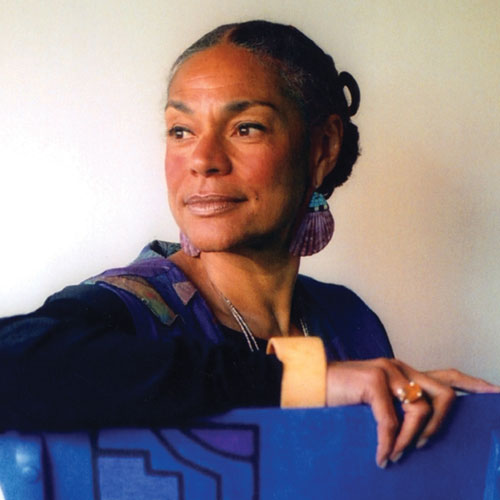At a time of serious anxiety about financial collapse, threats to international security and the spread of intra-community violence, it may seem misplaced to devote reviewing space to a book that seemingly offers little more than a few narratives of domestic familial relationships among a handful of American parents and their almost-adult children. But doubting the value of this study on those grounds would only be to fall into the gender trap described so eloquently and ironically by Virginia Woolf in A Room of One’s Own: “This is an important book, the critic assumes, because it deals with war. This is an insignificant book because it deals with feelings of women in the drawing room.” Although this book is about, and directs itself to, the feelings of parents and offspring across the gender spectrum, and the mothers interviewed are in employment outside the home, it is definitely a drawing-room affair, in its intimate conversational tone and recurrent references to embroidery and the careful relationship-stitching that goes into the multicoloured fabric of real life in ever-changing and developing households. And what a room.
The topic – how children become the teachers of their parents – is not new. However, as Sara Lawrence-Lightfoot shows in her useful literature overview, scholarly attention to this subject has tended to concentrate on the reverse-learning relationship between immigrant parents and their children, from a new language to beliefs, manners, values and ethics. In this book, which draws on in-depth interviews with a variety of parents, Lawrence-Lightfoot extends the concept to cover the developmental growth of a broader spectrum of parents, all of whom have grown with, and because of, their children.
As such, it is a book about caring for adults and the inherent fragility in changing parental roles and responsibilities. Every child is in some ways an “other” in relationship to its parental carers, if only by being born in a different time or different financial circumstances, or of a different gender, temperament, ability or ethnicity. The degree of “otherness” inevitably tests parents’ love, endurance and sense of self when children begin to assert their own independence and stop taking no for an answer, helping parents to give up the need to fix everything. Parent-child development becomes turned upside down in simultaneously disquieting and inspiring ways, as children socialise parents into new understandings and new ways of being. When children make themselves visible, parents have to learn to let go, and they learn how to do so from their children.
These very clearly and empathetically presented narratives of learning parents make for an interesting, moving and very engaging work, but this study’s very simplicity and accessibility hides a methodological sophistication and profound ethical purpose. In her earlier work, Lawrence-Lightfoot pioneered the notion of social portraiture – the art and science of making a portrait, shaped through dialogue between the portraitist and the subject, each participating in the creation of an image in mutual encounters crucial to its final authenticity. Creating a text, she has argued, is like painting with words, merging the science of ethnography with the evocative resonance of literary writings. The intersection of literature and social science is long-standing, as is the tradition of combining science and narrative in clinical medical and therapeutic work. Such boundary-crossing goes beyond the abstractions of academic disciplines to capture active, lived reality at its richest, most complex and contradictory. The portrait aims both to present the engaging narrative of a good story and an empirically systematic, rigorous and well-researched case.
In bringing these separate stories together, Lawrence-Lightfoot emphasises the importance of her own interpretations in the search for points of thematic convergence, resonant universal themes about the meanings people attach to behaviour and what supports expressions of strength and something vaguely termed “goodness” in close relationships. Her criticism of quantitative social science is less epistemological than moral: looking for the general and the typical, the average and its distribution, it ends up focusing on the different, the deviant and the pathological; and by ignoring what works, in favour of explaining what does not, it also fails to feed adequately into evidence-based practice. Why not focus in depth on what happens when things go well, on moral agency and how adults learn to develop respect and support for each other? By demonstrating her own respect and trust in empathetic deep listening, she gains both, and is in return offered insightful conversations about the most intimate human relationships that disrupt and reintegrate family participants over time.
Given the literary quality of Lawrence-Lightfoot’s family narratives and the depth of understandings shown by the participants in her conversations – it seems highly misleading to call them subjects or respondents – they should be read in their entirety by a wide audience of teachers, social workers, therapists, parents and children themselves. The families presented have grappled with offspring they have had to learn from: how to live with both “old” and “new” country values and behaviours; how to accept and learn with a transgender child; how to learn openness and confidence as a gay father from a supportive son; how to worry less as a mother of a lesbian daughter; how to learn to live with the responsibility of caring for “difficult” adopted offspring; how to love life as it is, and art as a way of life, from an autistic child; how to survive a son’s tragic, disabling accident by learning to lean on the strength of his young siblings; and how to rear, and learn from, black sons in a non-black environment.
Each family unit painfully, but productively, learns to be honest in ways respectful of each other. The parents have come to share a sense of accomplishment and mutual empathy with their children. Each story reflects the wider situation behind it, and the significance of external contexts, politics and resources is often emphasised. But the analysis of the wider picture does not entirely match that of the depth of the parental stories and would require a different methodology, and a different book.
In the creation of a collective biography of a social group, in this case parents of young adults, individual voices can easily get lost in attempts to create a universalised whole subsumed under an artificial conceptual framework, but Lawrence-Lightfoot’s well-crafted writing makes the individuality of each portrait stand out magnificently. I have to confess to both laughing and crying with them, often out of recognition, but also out of empathy over unexpected tragedies and unbearable losses. One learns a lot from real persons in real circumstances, however distant they may be geographically. Generalised sociological and pedagogical soundbites, whether in scholarly journals or on Twitter, do not enhance empathy and the understanding of complexity; if anything, they discourage it in favour of quick fixes and categorical put-downs. It is ultimately complex real human beings – parents and offspring like the rest of us – who get killed in war, and drawing-room conversations that focus on empathetic understanding of their development should have as much pride of place in academic research as the study of military history and economics. Growing Each Other Up does not replace important analyses of contemporary political crises, but, in the fullness of life, it is equally important.
E. Stina Lyon is professor emeritus of educational developments in sociology, London South Bank University.
Growing Each Other Up: When Our Children Become Our Teachers
By Sara Lawrence-Lightfoot
University of Chicago Press, 296pp, £19.50
ISBN 9780226188409 and 6377278 (e-book)
Published 22 September 2016
The author

Sara Lawrence-Lightfoot, Emily Hargroves Fisher professor of education at the Harvard Graduate School of Education, grew up in “apple orchard country northwest of New York City, in Skyview Acres, an ‘intentional’ community founded in the early 1950s by a group of left-leaning, progressive folks who had worked together in the civil rights and peace movements”.
A studious child as well as a “big dreamer”, she took her first degree at Swarthmore College, “an intensely serious, cerebral place where, as a student coming from a mediocre public school, I initially felt woefully inadequate and academically unprepared, and where I was challenged to figure out how to capitalise on my own intellectual capacities and gifts”.
She has taught at Harvard University for 45 years, and sees the Graduate School of Education as “an exciting, challenging and always evolving place that seeks to bridge theory and practice, engage in interdisciplinary enquiry and discourse, support efforts to transform and improve schools, and increase access and opportunity for all students, especially those who come from marginalised and under-resourced communities.
“As a school of education, however, I have always wished that we professors might be more systematically and ritualistically engaged with one another’s teaching, as observers, witnesses, connoisseurs and critics. Such collegial exchanges would, I believe, enrich our work and development as pedagogues.”
What gives her hope? “Every day I feel hope as I hear the voices and look into the eyes of my students, my children and my grandchildren, who seem so open-minded and open-hearted, challenging in their questioning of injustices and prejudice, and who understand their powerful role as teachers, creating an intergenerational dialogue that provokes and inspires the rest of us.”
Karen Shook
POSTSCRIPT:
Print headline: Learning from our offspring
Register to continue
Why register?
- Registration is free and only takes a moment
- Once registered, you can read 3 articles a month
- Sign up for our newsletter
Subscribe
Or subscribe for unlimited access to:
- Unlimited access to news, views, insights & reviews
- Digital editions
- Digital access to THE’s university and college rankings analysis
Already registered or a current subscriber? Login




